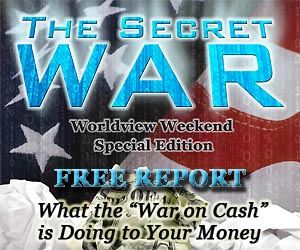Don’t Underestimate North Korea’s Nuclear Arsenal
By R. James Woolsey and Peter Vincent Pry,
North Korea successfully tested a solid-fueled missile earlier this month, the latest in a series of technological leaps. Instant experts allege Pyongyang is not yet a serious nuclear threat to the U.S. Some reporters say North Korea does not have “miniaturized” nuclear warheads for missile delivery and that its weapons are primitive—even after five nuclear tests. These are dangerous delusions.
Google the history of nuclear testing and weapons development, and North Korea’s tests suddenly seem a lot more serious. This has all been done by the U.S., the Soviet Union, China, Britain, France, Israel, South Africa, India and Pakistan. History suggests North Korea already has nuclear-missile warheads and a sophisticated array of nuclear weapons.
Testing is not necessary to develop nuclear weapons. The first atomic bomb, which used enriched uranium, was never tested: Hiroshima was the test. The second one, which used plutonium, was tested once and worked perfectly at Trinity and on Nagasaki.
France entered the nuclear club in 1960 with a sophisticated high-yield fission weapon that worked perfectly on its first test.
According to the Wisconsin Project and defector Mordechai Vanunu, Israel developed a sophisticated array of nuclear weapons from the 1960s to the ’80s—all without testing. Its arsenal ranges from high-yield thermonuclear missile warheads to low-yield tactical weapons, including neutron warheads.
Opinion Journal Video: American Enterprise Institute Scholar Michael Auslin on the case for listing North Korea as a state sponsor of terrorism. Photo credit: Fuji Television/Associated Press.
South Africa also developed nuclear weapons and designed a missile warhead without testing. India and Pakistan designed atomic bombs, thermonuclear warheads and neutron warheads 20 years before testing.
North Korea built its first atomic weapons by 1994, more than a decade before testing. Yet the yield of North Korean nuclear tests isn’t known. Estimating yields from seismic signals is inexact. Press reporting on estimates for North Korea’s January 2016 test range from 4 to 50 kilotons. The estimated yield for North Korea’s fifth nuclear test, in September 2016, is between 20 and 30 kilotons.
Less known: North Korea could conduct decoupled tests to hide their true yield. Decoupling entails detonating a device in a cavity to dampen the signal by as much as 10-fold. A 100 kiloton test could look like 10 kilotons.
And low-yield tests may indicate more-advanced nuclear technology. High-yield testing is usually done for political reasons and to study nuclear-weapon effects. Low-yield testing is scarier because it is usually done to verify design principles for a more advanced generation of nuclear weapons.
In 1946 the U.S. used 23-kiloton Nagasaki-type atomic bombs to study blast and radiation effects on ships and structures. But it was the 1951 nuclear tests of mostly low-yield devices, between 1 and 8 kilotons, that confirmed new designs to expand the U.S. deterrent. America went from 50 atomic bombs in 1948 to hundreds of new weapons, including hydrogen bombs.
Two of the most significant early Soviet nuclear tests had yields of only 2 kilotons and 3.5 kilotons, but these foreshadowed tactical nuclear weapons, including nuclear artillery and torpedoes.
Pakistan’s nuclear test series in 1998 had yields of mostly only 1 kiloton. At the time, the Pakistan Atomic Energy Commission said these were “neutron bombs—a battlefield weapon that is essentially a low-yield device.” Almost immediately afterward, Pakistan deployed nuclear-armed missiles and bombers.
North Korea has intercontinental ballistic missiles, the mobile KN-08 and KN-14, that can strike the U.S. mainland. They are probably nuclear-armed. Following North Korea’s fourth illegal nuclear test in January, the Pentagon warned that Pyongyang might have tested components of a hydrogen bomb.
The Congressional EMP Commission—and Russian, Chinese and South Korean sources—assess that North Korea probably has nuclear arms specialized for electromagnetic pulse, what the Russians call “Super-EMP” weapons. These warheads would be low-yield because they are designed to produce gamma rays, not a big explosion.
These are the most dangerous weapons known to man. A single Super-EMP warhead detonated over North America could permanently black out the U.S. and Canada and kill up to 90% of the population through starvation and societal collapse.
Since North Korea and Iran are strategic partners, and since nuclear testing is unnecessary to develop weapons, Iran too might already have nuclear-armed missiles.
Among the senior national-security experts who share these views are William Graham, chairman of the EMP Commission; Henry Cooper, former director of the Strategic Defense Initiative; and Fritz Ermarth, who chaired the National Intelligence Council.
The U.S. should immediately harden its national electric grid to deter and defeat a nuclear EMP attack. Further, it should quickly redeploy Aegis guided missile cruisers to America’s most vulnerable regions. Looking to the future, President Trump must work with Congress to modernize the U.S. nuclear deterrent and revive President Reagan’s Strategic Defense Initiative by deploying space-based missile defenses to render nuclear missiles obsolete.
Mr. Woolsey was director of the Central Intelligence Agency (1993-95). Mr. Pry, chief of staff of the Congressional EMP Commission, has worked in the House Armed Services Committee and served in the CIA.
Trending Stories
Latest
WE'RE A 100% LISTENER SUPPORTED NETWORK
3 Simple Ways to Support WVW Foundation
Make Monthly Donations
-or-
A One-Time Donation
-
Mail In Your Donation
Worldview Weekend Foundation
PO BOX 1690
Collierville, TN, 38027 USA -
Donate by Phone
901-825-0652















